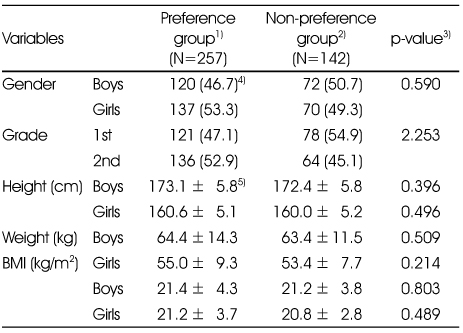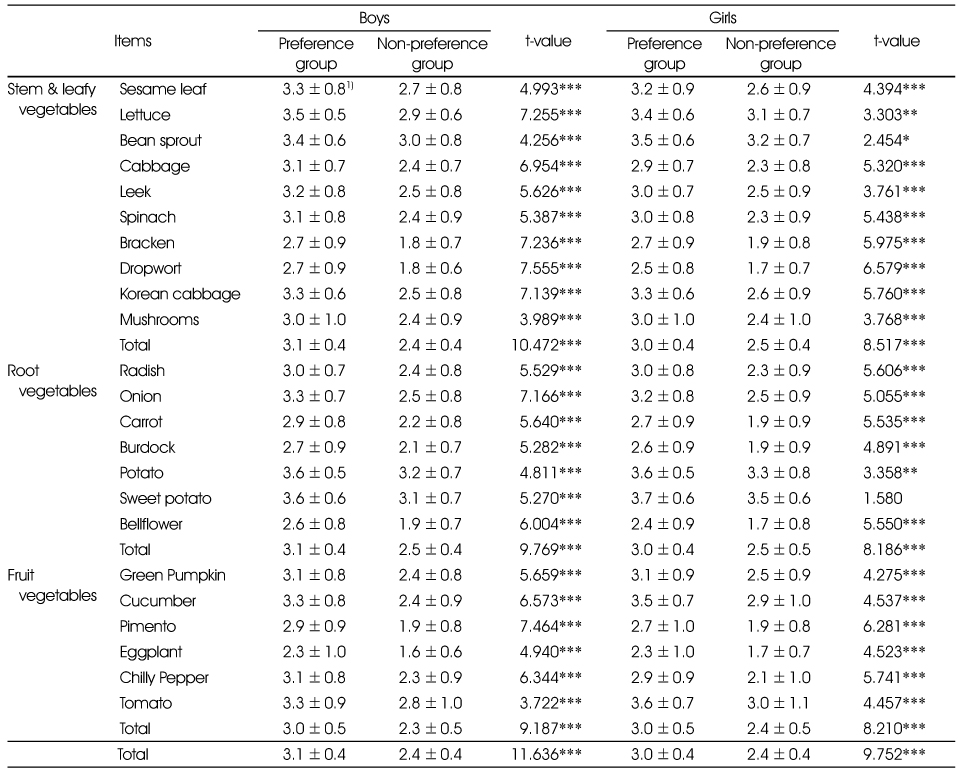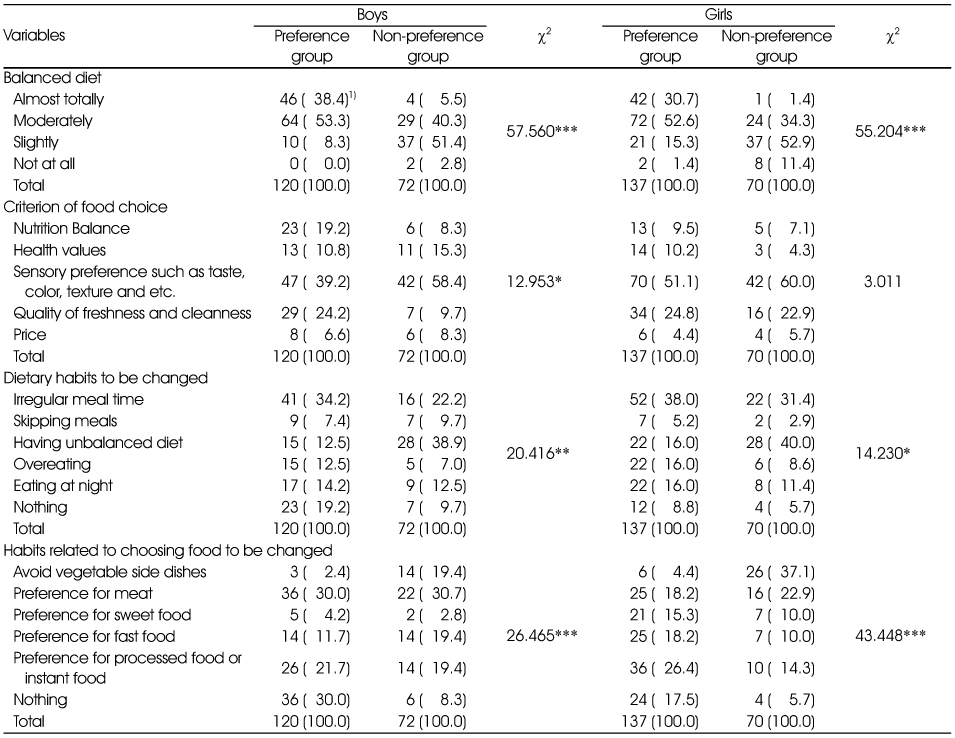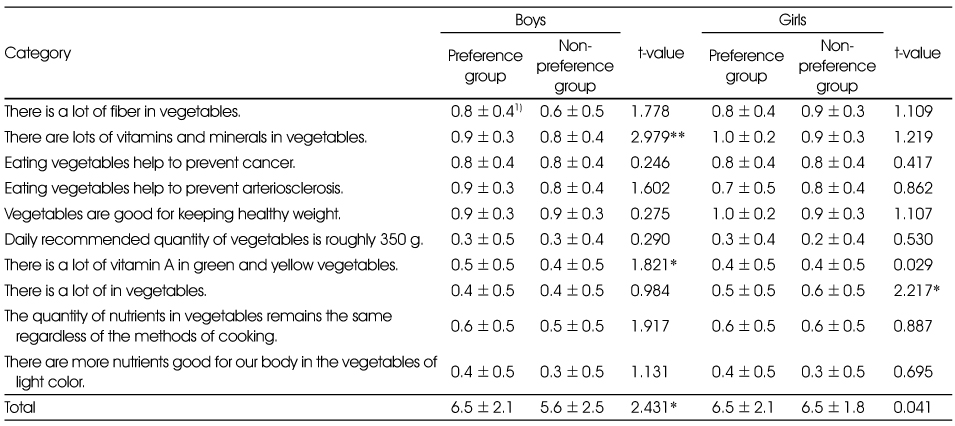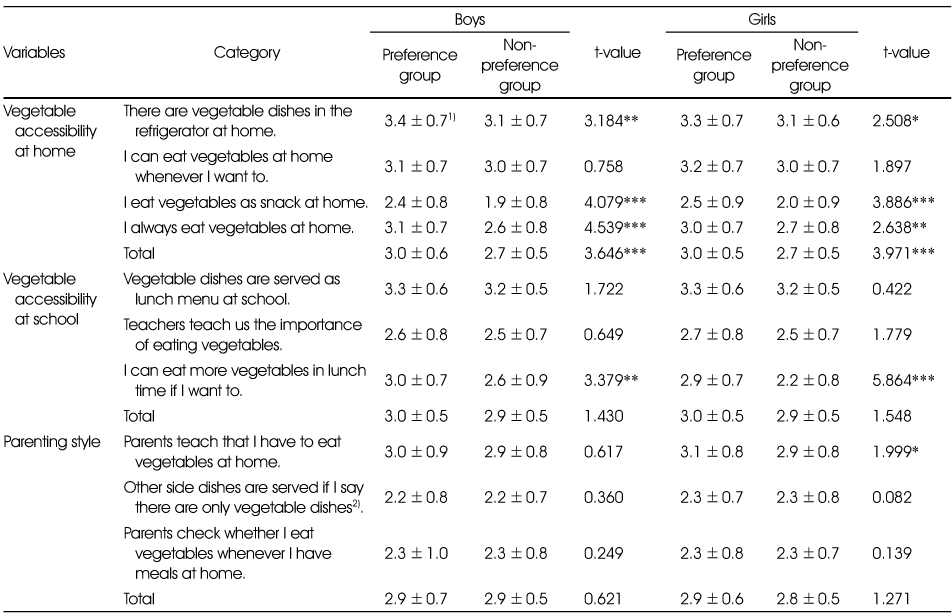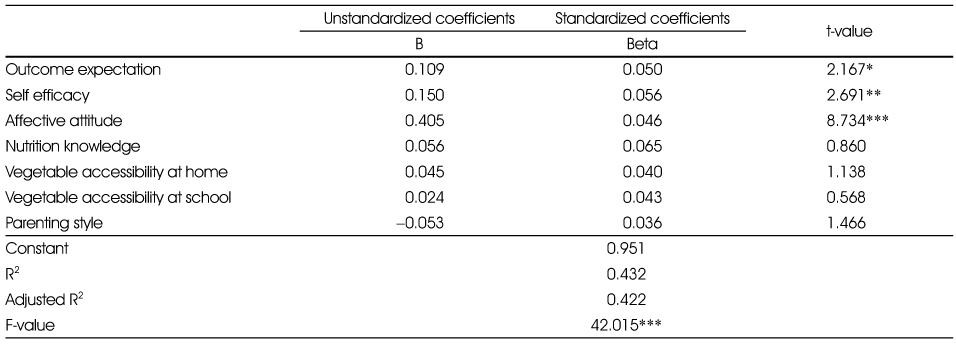References
1. Lee KH, Kim KW, Lee YK, Lee SM, Son SM. Practice in nutrition education & counseling 3rd edth ed. Seoul: Life Science Pulishing Co; 2015. p. 31p. 353–364.
2. Cho SH, Yoo HH. Nutrition knowledge, dietary attitudes, dietary habits and awareness of food-nutrition labelling by girl's high school students. Korean J Community Nutr 2007;12(5):519–533.
3. Korea Center for Disease Control and Prevention. The 10th Korea youth risk behavior web-based survey [internet] 2014. cited 2015 Feb 10. Available from:
http://yhs.cdc.go.kr.
4. Ministry of Health and Welfare. Korea Center for Disease Control and Prevention. Korea health statistics 2013; Korea National Health & Nutrition Examination Survey (KNHANES VI-1) [internet] 2014. cited 2015 Jan 10. Available from:
http://knhanes.cdc.go.kr.
5. Marlett JA. Sites and mechanisms for the hypocholesterolemic actions of soluble dietary fiber sources. Adv Exp Med Biol 1997;427(1):109–121.
6. Jenkins DJ, Kendall CW, Axelsen M, Augustin LS, Vuksan V. Viscous and nonviscous fibers, nonabsorbable and low glycaemic index carbohydrates, blood lipids and coronary heart disease. Curr Opin Lipidol 2000;11(1):49–56.
7. Pollard CM, Nicolson C, Pulker CE, Binns CW. Translating government policy into recipes for success! Nutrition criteria promoting fruits and vegetables. J Nutr Educ Behav 2009;41(3):218–226.
8. United States Department of Agriculture. Fresh fruit and vegetable program [internet] 2002. cited 2015 Feb 1. Available from:
http://www.fns.usda.gov/ffvp.
9. Hong JH, Cho MS. Acceptance of vegetable menus of a school lunch program by high school students in Seoul and its association with health and dietary behavioral factors. Korean J Food Sci Technol 2012;44(1):121–134.
11. Ministry of Health and Welfare. Dietary reference intakes for Koreans 1st revisionth ed. Seoul: The Korean Nutrition Society; 2010. p. 609.
13. Kim GR, Park SH, Kim MJ. A survey on intake of vegetable foods for proper dietary habits in middle school students. Korean J Culinary Res 2007;13(4):128–137.
14. Ahn YK, Ro HK. A survey on preferences for vegetable cooking methods and vegetable-aversion-related factors among elementary school students in Kwangju and Chonnam regions. Korean J Community Nutr 2009;14(5):531–544.
15. Ahn Y, Kim KW. Beliefs regarding vegetable consumption, self-efficacy and eating behaviors according to the stages of change in vegetable consumption among college students. Korean J Community Nutr 2012;17(1):1–13.
16. Ham E, Choi MK. Evaluation of vegetable intakes according to body mass index of adolescents in Chungnam. J Korean Soc Food Sci Nutr 2014;43(6):926–933.
17. Contento IR. Nutrition education-linking research, theory, and practice 1st edth ed. Sudbury: Jones and Barlett Publishers; 2006. p. 88–108.
p. 91p. 122p. 125p. 117–118.
18. Middaugh AL, Fisk PS, Brunt A, Rhee YS. Few associations between income and fruit and vegetable consumption. J Nutr Educ Behav 2012;44(3):196–203.
19. Kim JY. A study on middle school students' preference and perception for vegetables depending on their knowledge of nutrition [master's thesis] Chungang University graduated school of education; 2013. 58–65.
20. Chung SJ. Usage the stage of change model preceed-proceed model In : Proceedings of 2006 Workshop of the Korean Society of Community Nutrition; 2006 Feb 2; Seoul. p. 1–10.
21. Baek JY, Kim HY. Vegetable eating behavior and preference of elementary school students by stage of change for vegetable intake. Korean J Food Cult 2007;24(2):146–154.
22. Chung EJ, Lee SH, Ahn HS. Vegetable preferences and their associations with nutritional knowledge and health-related variables in 5th and 6th grade schoolchildren. J Korean Diet Assoc 2009;15(2):83–96.
23. Jung HK, Jo HJ, Choi MJ. A study on vegetable & fruit eating habits and dietary fiber intake of high school students - focusing on high school students in Daegu -. J Korean Soc Sch Health Educ 2011;12(3):43–64.
24. Suh Y, Choi A, Chung YJ. Psychosocial factors related with the intake of vegetables and fruits by stage of change of elementary school children in Chungnam province. Korean J Nutr 2009;42(7):639–649.
25. Suh Y, Chung YJ. The effect of nutrition education on the improvement of psychosocial factors related to vegetable and fruit intake of elementary school children in pre-action stages. Korean J Nutr 2010;43(6):597–606.
26. Lanfer A, Bammann K, Knof K, Buchecker K, Russo P, Veidebaum T. Predictors and correlates of taste preferences in European children: The IDEFICS study. Food Qual Prefer 2013;27(2):128–136.
27. Park SH, Park HR, Jeon SB, Jeong SY, Tserendejid Z, Seo JS, Lee KH, Lee YK. Awareness and practice of dietary action guide for adolescence among middle and high school students in Korea. Korean J Community Nutr 2012;17(2):133–145.
28. Cho HS, Choi MK. A study on body image and dietary habits by body mass index of middle school students in Chungnam. Korean J Food Nutr 2010;23(3):368–375.
29. Park SH, Kim MJ. Acceptance and preference of vegetables in menus for middle school students. J Korean Soc Food Sci Nutr 2008;37(12):1660–1666.
30. Cho HK, Kim MH. Dietary behavior and nutrient intake in university female students according to taste preference. J Korean Diet Assoc 2010;16(2):100–115.
31. Ku UH, Seo JS. The status of nutrient intake and factors related to dislike of vegetables in elementary school students. Korean J Community Nutr 2005;10(2):151–162.
32. Wardle J, Cooke LJ, Gibson EL, Sapochnik M, Sheiham A, Lawson M. Increasing children's acceptance of vegetables; a randomized trial of parent-led exposure. Appetite 2003;40(2):155–162.
33. Woo T, Lee KH. Effects of sensory education based on classroom activities for lower grade school children. Nutr Res Pract 2013;7(4):336–341.
34. Woo TJ, Lee KH. Relationship between sweet preferences and motivation factors of 2nd grade schoolchildren. Korean J Food Nutr 2014;27(3):383–392.
35. Kristal AR, Glanz K, Tilley BC, Li S. Mediating factors in dietary change: understanding the impact of a worksite nutrition intervention. Health Educ Behav 2000;27(1):112–125.
36. Liem DG, Mars M, Graaf C. Sweet preferences and sugar consumption of 4-and 5-year-old children: role of parents. Appetite 2004;43(3):235–245.
